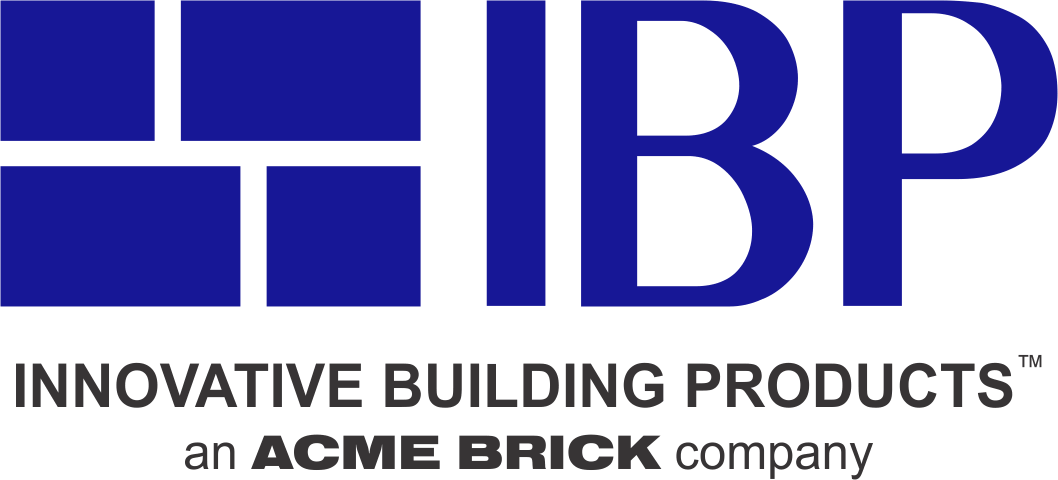If there’s one thing humans are good at, it’s making things with clay. From the simplest earthenware jars to the most intricate of sculptures, from sun-dried bricks to kiln-fired ceramics, clay goods have played an important role in shaping human history and civilization as we know it, especially when it comes to the built environment.
And while it's true that clay-based products like terracotta shingles and small format ceramic wall/flooring tiles have long featured in architecture, ceramic as a cladding material is a comparatively recent innovation—one increasingly popularized by companies like Agrob-Buchtal.
The Enduring Allure of Agrob-Buchtal’s Ceramic Façades
Headquartered in Germany and boasting approximately 40 years of industry experience, Agrob-Buchtal is a leading manufacturer of ceramic tiles and architectural ceramics. It specializes in curtain-type, rear-ventilated terracotta façades, which offer several inherent advantages: improved moisture management, increased energy efficiency, and superior acoustic control. Agrob-Buchtal ceramics also offer the following benefits:
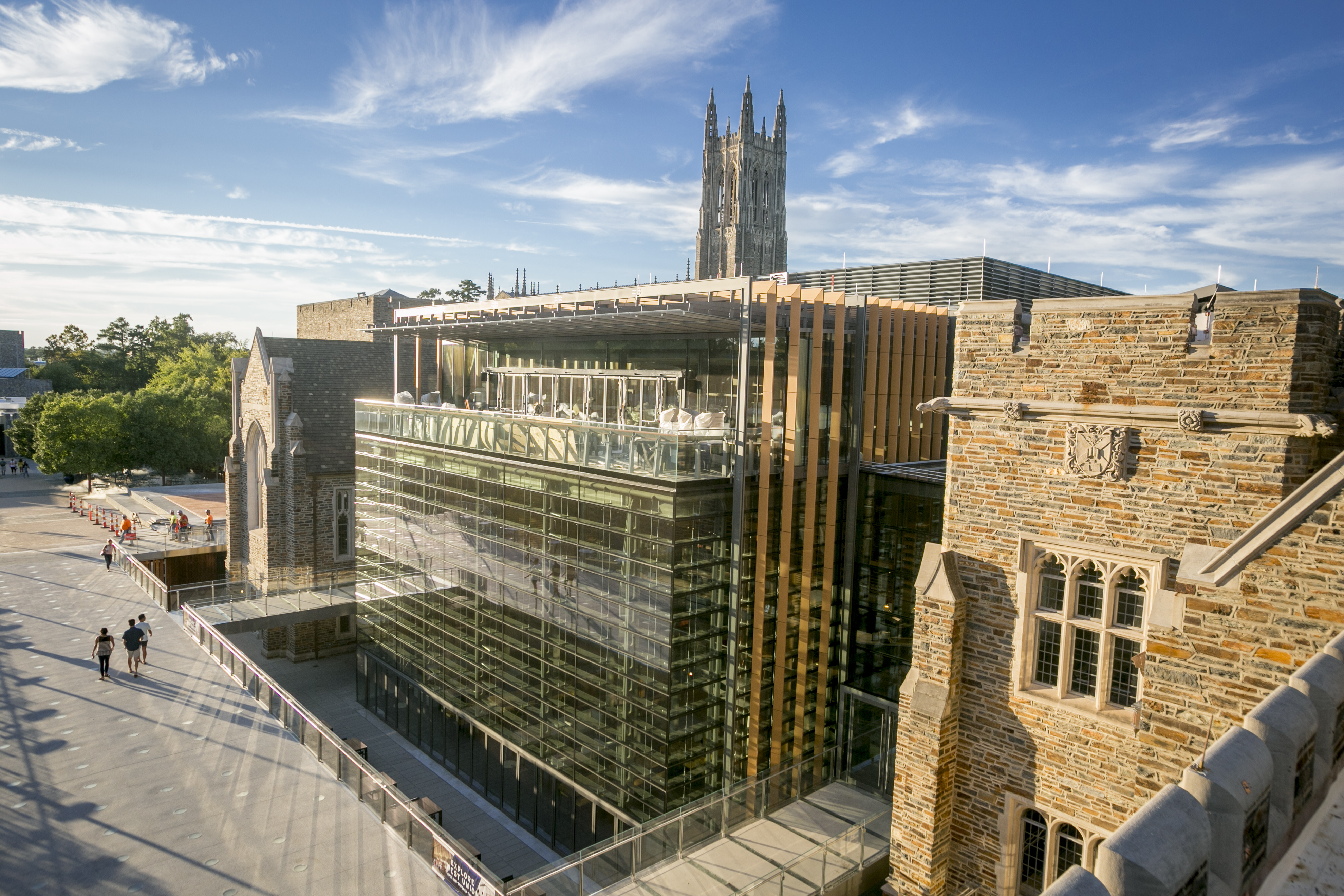
Durable & Weather-Resistant
Durability is at the core of all Agrob-Buchtal products and begins with the careful selection of raw materials: “The ceramic panels are crafted from specially chosen clays, kaolin, and feldspar, wet-extruded into precise shapes, carefully dried, and then fired at temperatures up to approximately 1,200°C (2,192°F),” says Luca Bononcini, Sales Consultant at Agrob-Buchtal. “This process results in panels of exceptional strength, weather resistance, and dimensional accuracy.”
Because they contain no organic materials, ceramic façade panels are inherently classed as non-combustible, meaning they will not contribute to the spread of fire or produce smoke, vapors, or toxic gases—an important quality in a time when wildfires are increasing in both frequency and severity. When combined with non-combustible insulation materials like mineral wool and additional fire barriers, Agrob-Buchtal’s ceramic panels can help projects achieve extremely high levels of fire resistance.
Of course, Agrob-Buchtal’s ceramics also perform exceptionally well at the other end of the temperature scale, being highly resistant to frost and tested to withstand upwards of 100 freeze-thaw cycles, minimizing the likelihood of cracking or fracturing in cold weather.
Diverse Color Options & Stylistic Versatility
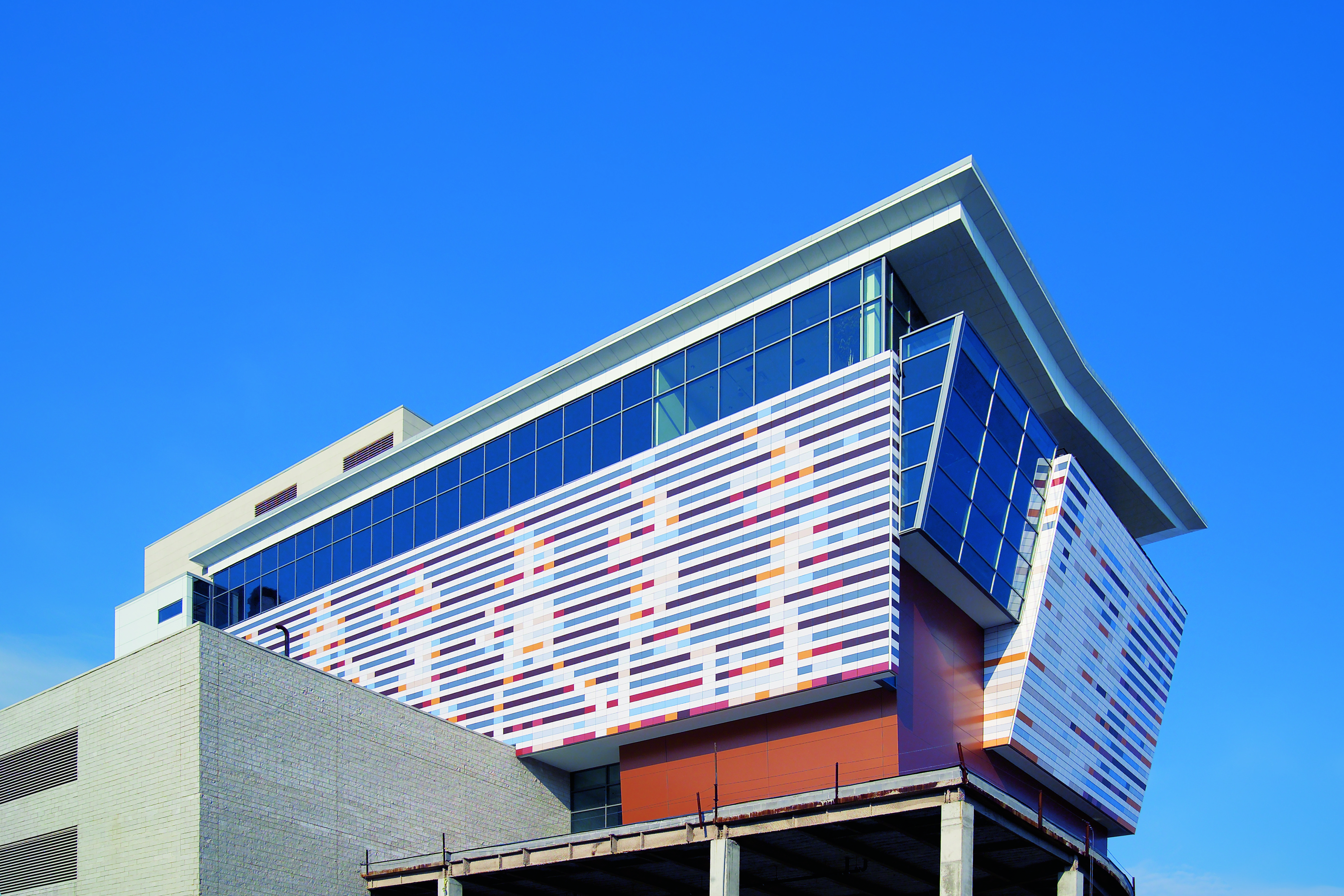
Agrob-Buchtal's ceramic façades are available in an extremely wide range of colors across three core color collections:
- SpectraView (Glazed) - Developed for the company by color designer Peter Zoernack, the SpectraView palette range encompasses nine coordinating color families and contrasting colors; the standard colors have a silky-matte finish while the contrasting colors have a glossy finish.
- Natura (Unglazed) - Though not as extensive as the SpectraView collection, Natura nevertheless contains a rich selection of muted, unglazed earth tones.
- Design (Glazed & Unglazed) - The Design collection opens up even more aesthetic possibilities by allowing architects to enjoy the benefits of ceramic while achieving the look of stone, cement, metal, or wood through cutting-edge digital printing; glazed and unglazed colors are available, although the latter contains fewer options.
When combined with equally diverse format and surface finish options, this extensive color palette gives architects nigh-endless possibilities for realizing their creative visions.
Looking for a shade that isn’t in one of these collections? Special colors are available upon request to ensure maximum design freedom for your project.
Low-Maintenance & Self-Washing
Though a necessary maintenance procedure, cleaning large façades can be expensive, often costing building owners thousands of dollars each year. To help reduce costs associated with cleaning, Agrob-Buchtal developed Hytect®, an optional self-washing surface coating for ceramic tiles that prevents dirt, soot, moss, algae, fungi, and other pollutants from building up and staining.
Hytect’s self-cleaning capabilities are made possible thanks to the addition of titanium dioxide (TiO₂)—a semiconductor catalyst—during the firing process; the TiO₂ is permanently baked onto the panel’s surface and enables photocatalysis, absorbing energy from sunlight and triggering chemical reactions that produce hydroxyl radicals and superoxide anions, two extremely powerful oxidizing agents.
These oxidizing agents in turn react with organic pollutants and microorganisms like fungi, algae, moss, mold, bacteria, germs, and even viruses, causing them to either break down or decompose. Because photocatalysis causes surfaces to become hydrophobic, precipitation that falls on Hytect®-coated ceramics does not form individual droplets but instead spreads out to form a thin film that infiltrates and automatically washes away dirt and grime each time it rains. In this manner, building façades are able to remain attractive for many years without requiring mechanical cleaning, saving building owners a considerable amount in maintenance-related expenses.
And in addition to keeping buildings clean, Hytect® also helps to improve outdoor air quality by breaking down organic airborne pollutants. “The photocatalytic reaction also neutralizes air pollutants such as nitrogen oxides (NOₓ) and formaldehyde, transforming the building façade into an active contributor to cleaner air,” says Bononcini. “Over a building’s lifetime, large Hytect®-clad façades can offset a measurable portion of urban air pollution, similar in function to trees.”
Hytect® is an optional coating available on all Agrob-Buchtal ceramic façade products, including KeraTwin®, KerAion®, and KeraShape®. Read our previous Hytect® article to learn more or send us a message to talk with an expert.
Sustainable & Circular
Though terracotta products are often considered inherently sustainable, the manufacturing of ceramics en masse can generate large amounts of both waste and greenhouse-gas emissions. Fortunately, Agrob-Buchtal has long prioritized strategies to reduce its manufacturing footprint and improve material efficiency across its operations.
Recycling and reuse, for example, are central to the company’s business model, as virtually all manufacturing waste is collected, reprocessed, and returned to the production cycle, while waste from kilns is also recovered to power other production steps. All Agrob-Buchtal ceramics are also fully recyclable themselves, aligning with LEED, BREEAM, and DGNB sustainability standards. The company reuses water as well, manufacturing 90% of its products without the production of wastewater.
Agrob-Buchtal also recently announced a strategy for the future of climate-neutral ceramic tile production in Germany: “The ‘Road to Net Zero’ initiative forms the core of Agrob-Buchtal’s long-term climate strategy. The company aims to reduce CO₂ emissions across its five German plants to achieve net-zero production,” Bononcini says. “This involves large-scale installation of solar panels to cover electricity needs and support the future electrification of kilns, traditionally gas-powered equipment critical to ceramic firing.”
Transparency in sustainability is important to Agrob-Buchtal—a company-wide environmental product declaration (EPD) may be accessed here, while a product-specific EPD for KeraTwin® can be viewed here.
Agrob-Buchtal Ceramic Façades: A Product for Every Project
As it stands, Agrob-Buchtal offers three core ceramic façade products—KeraTwin®, KerAion®, and KeraShape®—each designed with certain applications in mind and backed by a 20 year warranty.
KeraTwin®
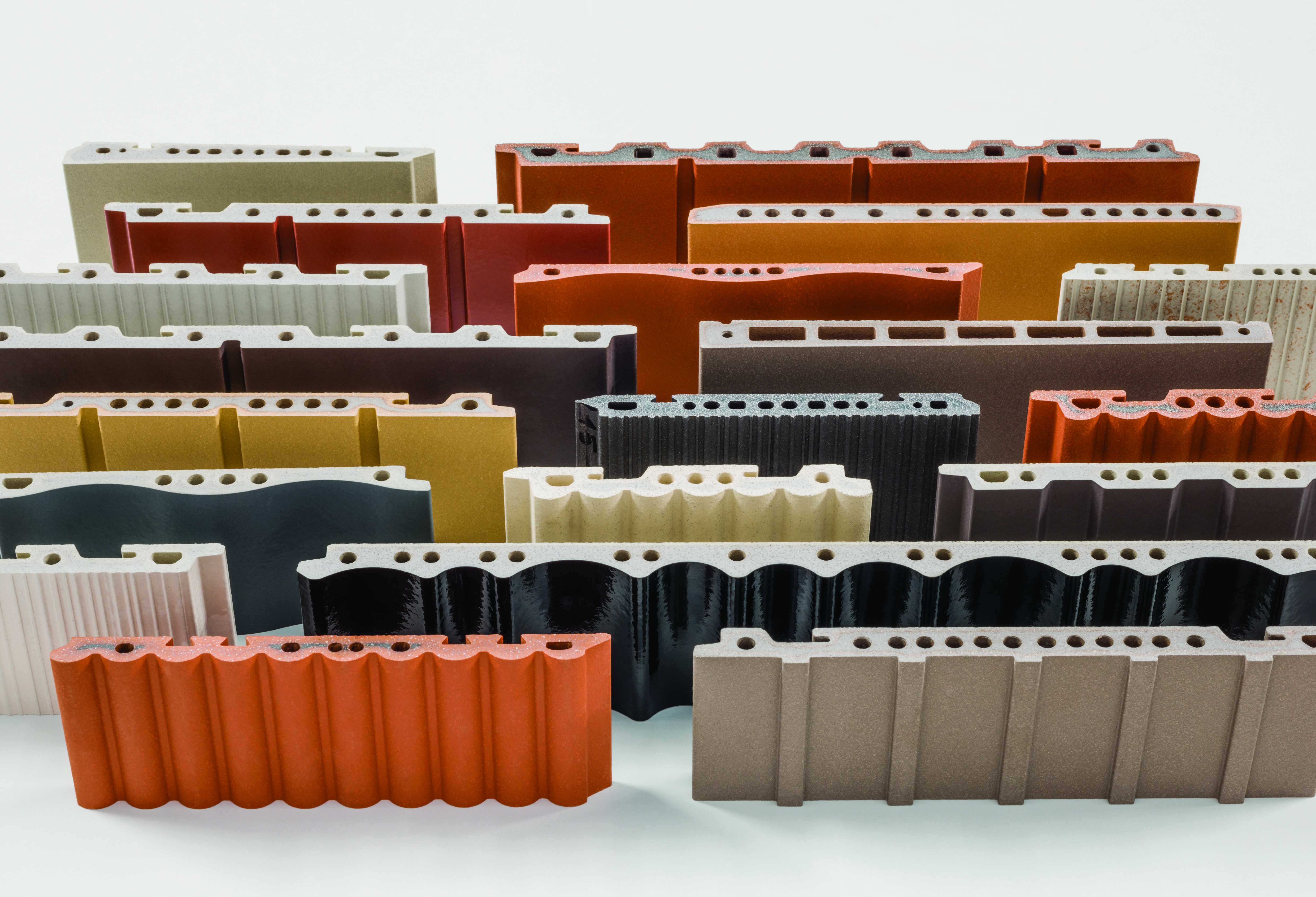
Designed to be both economical and as architecturally versatile as possible, the KeraTwin® K20 ceramic series is a lightweight ventilated façade solution that provides architects with unparalleled creative freedom. KeraTwin® panels are offered in a range of standard heights and are available in lengths of up to 1,800 mm (in 1 mm increments):
One of the standout features of the KeraTwin® series is its ingenious hidden mounting system. “The system’s intelligent design ensures quick and easy mounting on buildings, with flat, grooved, or profiled backs tailored for compatibility with the concealed K20 substructure,” says Bononcini. “This reduces installation times by up to 30% and ensures secure panel placement, even on tall or complex façades.” Such a system also allows individual KeraTwin® panels to be removed for inspection, cleaning, or repair without disturbing their neighboring panels.
There are six different fastening systems associated with the KeraTwin® K20 series, which depend on various project requirements.
| Fastening System | System Description |
| Vertical system rail | KeraTwin® panels are hung in the vertical system rail by way of the holding grooves on their backs, requiring no additional tools; panel position is secured using spacers or a joint profile adjusted to the joint width. |
| Vertical T-profile | KeraTwin® panels are hung in the vertical T-profile via the holding grooves on their backsides, requiring no additional tools; panel position is secured using spacers (for closed or vertical joints) or a joint profile adjusted to the joint width. |
| Vertical Omega profile | Horizontal bearing profiles are fixed at the posts in post-and-beam wall assemblies, with the vertical Omega profiles themselves able to be arranged without regard for the distance between posts; KeraTwin® panels are then simply hung in the Omega profiles via their holding grooves. |
| OmegaV profile for laying in bonds | Horizontal bearing profiles are attached to a basic construction at the desired height grid, after which the OmegaV profiles are then hung from the horizontal bearing profiles at the required spacing intervals and secured via screws to the two top suspension brackets; the KeraTwin® panels are then hung in the preassembled OmegaV profiles. |
| OmegaS with Omega profile and supporting profile | The OmegaS profiles are secured horizontally on the vertical supporting structure to help carry off wind loads, while the dead weight of the panels themselves is supported by the supporting profile mounted in the height grid; KeraTwin® panels are then hung horizontally in the Omega profiles using the holding grooves on the reverse side. |
| Clamp system | KeraTwin® panels at the maximum panel size of 135 x 50 cm are attached via clamps that laterally engage with the channels of the panel; an integrated compression spring within the clamps prevents clattering and constraining forces in the event of alternating wind loads. |
KeraTwin® ceramic façades are available in all SpectraView and Design Glazed/Unglazed colors, as well as a limited selection of Natura tones. This diverse palette is complimented by a wide range of surface options, including Grooved Panel, Irregular Groove, Grooved Panel Positive, Shed Profile, New Wave, Smooth, Brushed Surface, Striped, and Sine Wave, as well as two new highly textured surfaces—Canyon and Kaijo—developed in collaboration with designer Markus Bischof.
To ensure that façades remain harmonious and uniform across an entire building, Agrob-Buchtal also offers several detail solutions for the KeraTwin® series, including embrasures, joint profiles, mitre-cut corner solutions, and more.
KerAion®
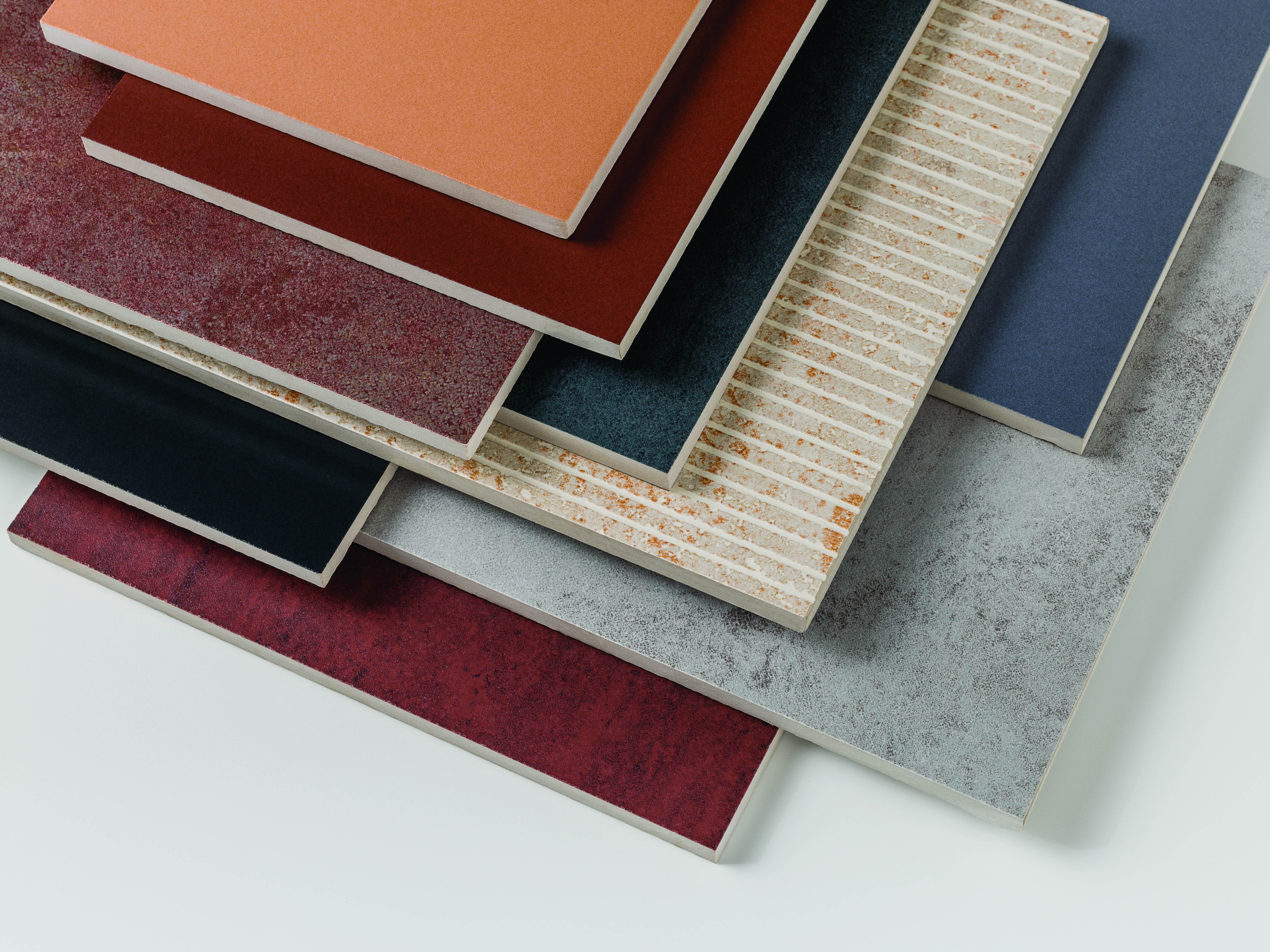
Agrob-Buchtal offers large format ceramics as part of the KerAion® K8 line, designed to provide alternatives to conventional board formats and deliver a high-quality, lightweight ceramic façade system for large buildings. Measuring just 8 mm in thickness and weighing only 3.687 lb/sf, KerAion® panels are available in four standard sizes, with additional sizes available upon request:
- 60 x 60 cm
- 60 x 90 cm
- 90 x 90 cm
- 60 x 120 cm
The KerAion® line of ceramics does not use the same invisible mounting system as KeraTwin®, but instead attaches via clips in order to streamline installation and replacement. “KerAion® panels are installed using visible stainless steel clamp fasteners, with clamp lips color-matched to the ceramic design,” says Bononcini. “Visible fastening enables quicker installation and cost transparency for architects, as well as easy inspection and replacement.”
Agrob-Buchtal also offers safety tapes that are applied to the panel's reverse side in-plant as an optional precaution; safety tape helps provide peace of mind by ensuring individual panels won't come loose and fall off in the event they are damaged. As far as color options go, the KerAion® line is offered in a limited range of SpectraView colors and certain colors from the Design Glazed collection.
KeraShape®
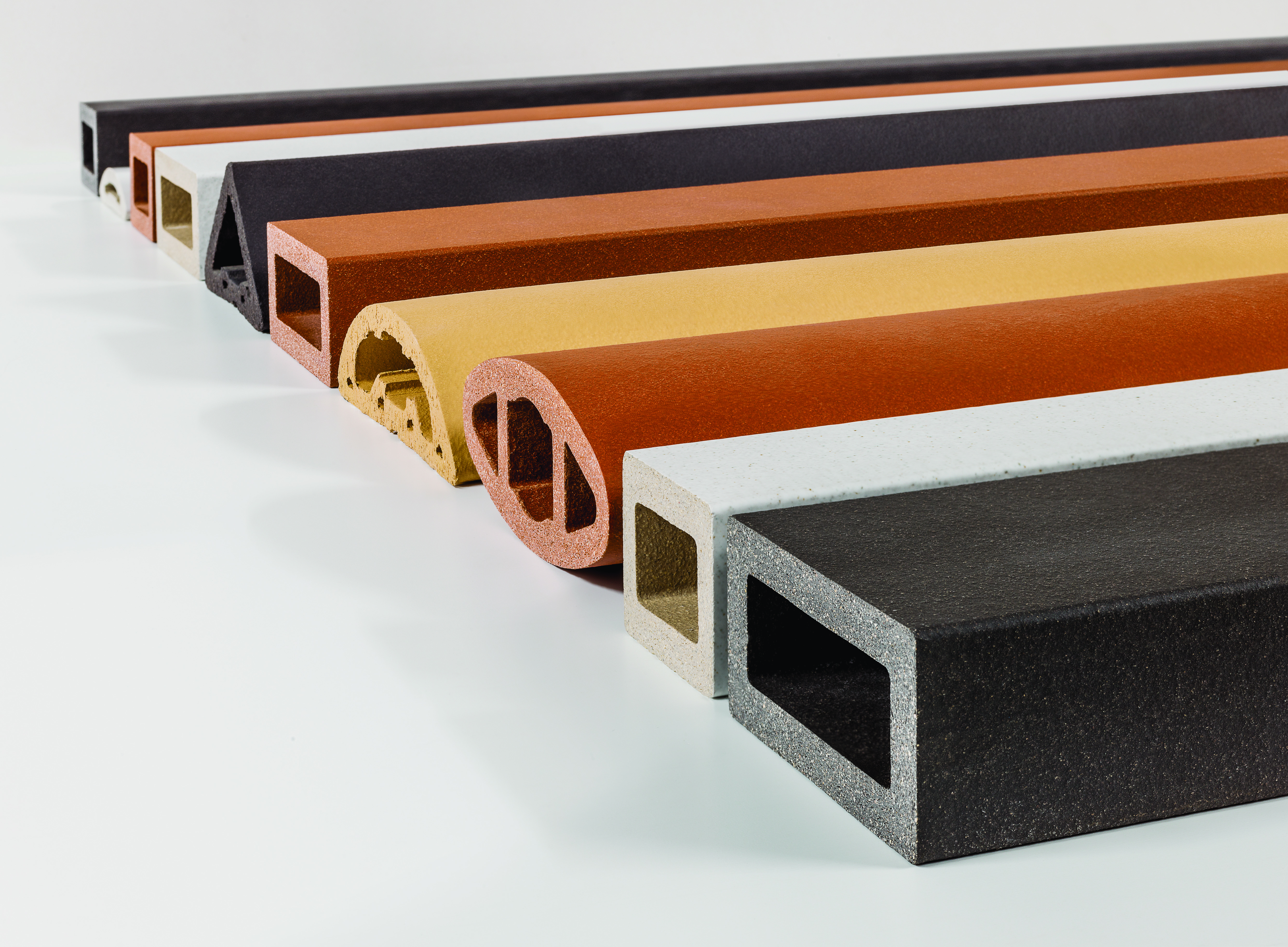
Marketed as Agrob-Buchtal’s “Ceramic in Profile” line, KeraShape® encompasses a standard range of rectangular tubes and rounded lamellar pieces designed to provide architects with visually striking architectural accents and highly functional ceramic elements with a myriad of practical applications including solar shading, privacy screening, and more.
“KeraShape® can also provide rain and wind protection or conceal mechanical equipment, like parking garages or rooftop structures, without sacrificing ventilation,” says Bononcini. “The KeraShapes empower architects to enhance building façades with 3D ceramic elements that deliver energy-efficient solar control, visual articulation, color variety, and design flexibility—all backed by Agrob-Buchtal’s technical expertise, material durability, and capability for custom solutions.”
As a whole, the KeraShape® ceramic in profile series is designed to be able to work in conjunction with KeraTwin® and KerAion® systems to create harmony across entire buildings and building complexes. The table below outlines those relevant specs for the three standard KeraShape® forms:
| Forms | Dimensions | Maximum Length | Finishes |
| Rectangular Tube (Standard) | 50 x 60 mm / 60 x 60 mm | 1,800 mm | Unglazed |
| 1,500 mm | Glazed | ||
| Rectangular Tube (Wide) | 50 x 100 mm | 1,500 mm | Glazed and unglazed |
| Lamellar Element | 140 x 60 mm | 1,200 mm | Unglazed |
Each individual KeraShape® element can be joined into arrays or extended across large spans; the fastening system used for KeraShape® elements depends on how the tubes are oriented.
- Horizontal laying. When installed horizontally, KeraShape® elements are attached using a built-in unit, angular insert, base plate, and securing clip.
- Vertical laying. Rectangular KeraShape® tubes laid vertically are attached via special fastening clamps.
KeraShape® elements are offered in a limited range of SpectraView colors and all Natura tones, although it should be noted that some Natura colors are not available on lamellar special pieces.
KeraYou®: Ceramics Beyond the Standard
Of course, Agrob-Buchtal understands that the aforementioned product lines might not be the best fit for every project—that's why it created KeraYou®, a collaborative approach to designing fine-tuned ceramic facade solutions.
“KeraYou® stands for more than just standard—the program offers tailor-made solutions from concept to production, often implementing special surface finishes, custom formats, or project-specific glazes and color technologies,” Bononcini says. “This hands-on, client-focused approach ensures that each façade reflects the identity and imagination of the design team, creating individualized architectural statements seen in featured references worldwide. Whether the goal is bold color, custom textures, kinetic forms, or integrated artistic features, KeraYou® provides the technical and creative support needed, resulting in buildings where the façade itself becomes an expression of creativity, culture, and place.”
Acme Brick & Agrob-Buchtal: A Perfect Pairing
Acme Brick is the leading distributor of Agrob-Buchtal ceramic products in the South Central and Southeastern United States, acting as intermediary between manufacturer and customer, arranging intercontinental shipping, and supplying projects with KeraTwin®, KerAion®, KeraShape®, and all associated parts.
“Acme Brick and Agrob-Buchtal have forged a strong and highly collaborative partnership aimed at expanding the reach and adoption of premium ceramic façade solutions in the United States,” says Bononcini. “Through Acme Brick’s dedicated cladding division and technical support, architects and builders throughout the U.S. benefit from localized service, project guidance, and seamless access to Agrob-Buchtal’s full suite of ceramic façade systems.”
Of course, Acme's involvement goes beyond just shipping and supplying projects with Agrob-Buchtal ceramics—the company also offers support and an array of resources to architects, builders, and contractors working with these products. “We have a training center that we opened up a couple years ago in our corporate office in Fort Worth,” says Bob Carter, Sales Technical Design Support liaison at Acme Brick. “So at least for the folks in Texas, we can bring them here and we have all the different Agrob-Buchtal parts and products, we have tools there…so we can actually do hands-on training, and the installers get a really good feel for how everything gets put together as well as a chance to ask questions.”
Interested in Agrob-Buchtal ceramic façades for your project? Email us at agrobbuchtal@brick.com to get the conversation started.
Agrob-Buchtal in the Field: Project Spotlights
Agrob-Buchtal’s ceramic façades can be found on commercial and residential buildings all around the world—and thanks to the sheer number of color, surface, format, and size combinations available, no two projects end up looking the same.
Round Rock Public Library
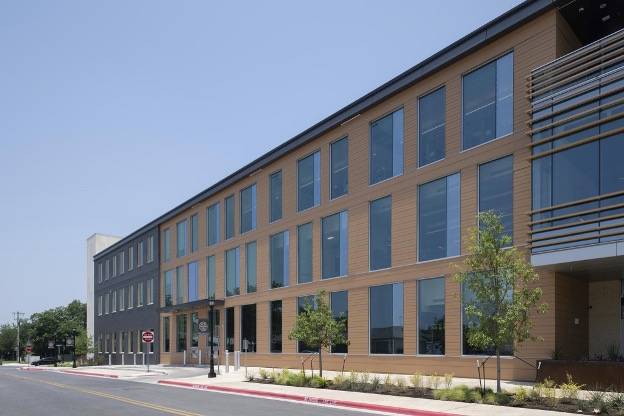
Designed by PGAL and 720 Design, the Round Rock Public Library in Texas encompasses a three story library and accompanying 300 car parking structure, all clad in a unique mixture of terracotta panels, glass, dark brick, and metal accents that help the project mesh with the established architectural styles of neighboring single-family residences, businesses, and mid-sized commercial properties.
After an unforeseen loss of the original supplier and installer late in the design phase, Acme Brick was brought on to help the design team figure out the best ways to incorporate Agrob-Buchtal ceramics into the design, ultimately settling on four different exterior applications across the project:
- West elevation. A combination of large smooth KeraTwin® ceramic panels and smaller grooved panels installed in a horizontal stacked running pattern create a wainscot effect.
- South elevation. KeraShape® tubular baguettes of varying, custom lengths and a 60 x 60 mm cross-section adorn the library's most prominent corner, drawing the eye and creating a sense of movement.
- East elevation. A series of vertical KeraTwin® panels were installed on the library's eastern façade, creating a very distinct look when viewed from within the central courtyard.
Acme’s in-house technical team also optimized the design of the ceramic solar screening on the parking structure's southern face: “The original supplier was going to have these really gigantic, super thick terracotta panels,” Carter mused. “Instead we proposed a large scale steel tube that was skinned with a much thinner KeraTwin® terracotta panel, and it worked out great. That’s one of the best looking architectural elements of the building, at least where the terracotta is involved.”
In total, 76,500 pounds of ceramic panels and baguettes—all in the color Salmon from Agrob-Buchtal’s Natura unglazed series—grace this modern civic structure's exterior, complementing the tan brick and limestone commonly found throughout downtown Round Rock. Read more in our full project Case Study.
Cedar Creek Lake House

Located along the northern bank of Texas’ Cedar Creek Reservoir, this custom lake house designed by CLINTON + COMPANY expertly blends form and function to create a luxurious, relaxed living environment that leverages passive solar design principles for increased comfort and efficiency.
A vertical terracotta solar screen formed by Agrob-Buchtal KeraShape® tubular elements supplied by Acme Brick shields the second level of the retreat’s south-facing entry façade from the harsh summer sun, allowing the ground floor to remain open and make effective use of daylighting without driving up cooling loads
Terracotta elements within the home’s interior complement the exterior ceramic tubes, while warm wood cladding and millwork further serve to establish and reinforce a connection to the natural world through conscious, climate-appropriate material selection.
Career Institute North
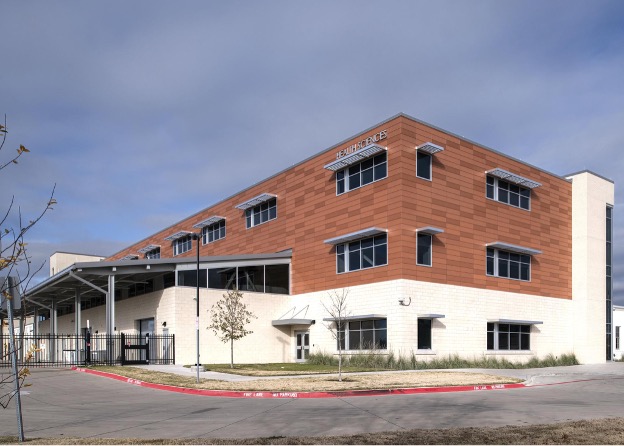
After significant tornado damage rendered Walnut Hill Elementary unusable in 2019, the Dallas Independent School District elected to give the 1940s-era building a second chance at life by converting it into a state-of-the-art career and technical education facility—now known as Career Institute North—focused on preparing high-school students for high-skill, high-demand occupations.
The building’s renovation and expansion was led by WRA Architects, which focused on reusing existing materials where possible and mirroring materials when necessary. Agrob-Buchtal’s KeraTwin® panels in Natura 403 Red, for example, were installed on portions of the façade in part to complement the terracotta tile roof, helping to preserve and honor the building’s distinctly Spanish/Mediterranean style while simultaneously integrating a contemporary flair reflective of its future-oriented function.
Completed in 2023, Career Institute North now serves five surrounding schools and has the capacity to accommodate 3,200 students, providing the next generations with hands-on training by seasoned veterans in various industries, including architecture and construction—meaning some alumni may end up installing Agrob-Buchtal's products themselves in the future!
